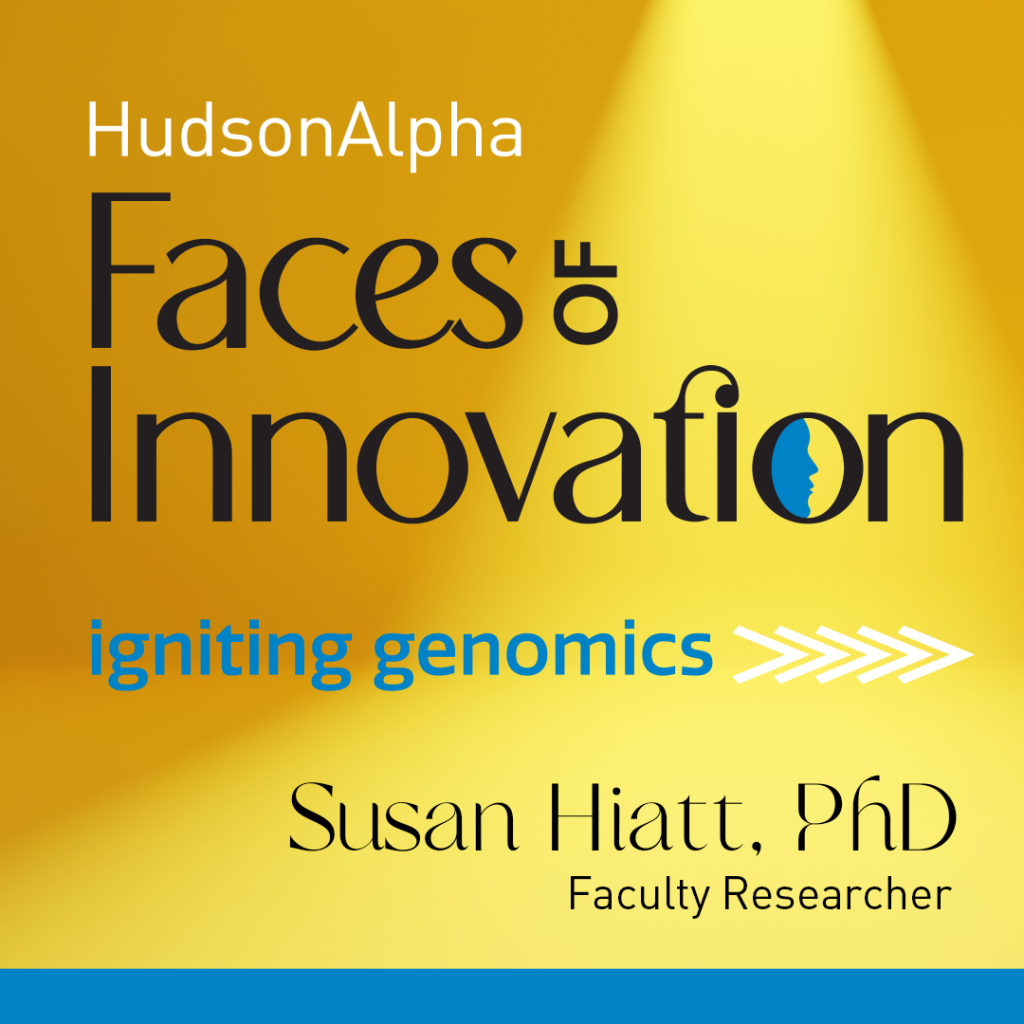Huntsville, Ala. — HudsonAlpha Institute for Biotechnology, a nonprofit genomics and genetics research institute, has been awarded a four-year, $6.7 million grant from the National Institutes of Health (NIH) for the next phase of the Encyclopedia of DNA Elements (ENCODE) Project, a fundamental genomics resource used by many scientists to study human health and disease. Funded by the National Human Genome Research Institute (NHGRI), part of the NIH, the ENCODE Project strives to catalog all the genes and regulatory elements – the parts of the genome that control whether genes are active or not – in humans and select model organisms.
“ENCODE has created a high-quality and easily accessible set of data, tools and analyses that are being used extensively in studies to interpret genome sequences and to understand the consequence of genomic variation,” said Elise Feingold, Ph.D., a program director in the Division of Genome Sciences at NHGRI. “These new awards provide the opportunity to strengthen this foundation by expanding the breadth and depth of the resource.”
The lab of Richard Myers, PhD, president and science director and a faculty investigator at HudsonAlpha, will continue its collaboration with Eric Mendenhall, PhD, an assistant professor at the University of Alabama in Huntsville who is also an adjunct faculty member at HudsonAlpha, to form an ENCODE mapping center, which has been a part of the project since its inception. The goal is to pinpoint where the genes and regulatory elements and the proteins – called transcription factors – that bind to those proteins and control genes are located within the human genome. Barbara Wold, PhD, of the California Institute of Technology and a long-time collaborator with Myers, is an advisor for the HudsonAlpha ENCODE project.
“We knew that finishing the human genome sequence in 2003 was just the beginning,” said Myers. “ENCODE is concerned with an even larger undertaking: understanding the function of every element in the human genome.”
Only about one percent of the genome contains the code that makes up our genes. And embedded somewhere in the other almost 99 percent of the genome are segments that bind to these transcription factors, serving as genetic switches that tell the genes when they should turn on and off.
In the last few years, the ENCODE team had been using an established technique, called ChIP-seq, for locating the switches, but it’s only effective about five percent of the time. To improve those odds, the HudsonAlpha group combined ChIP-seq with a new method for manipulating DNA sequences for research, CRISPR/Cas9. They adapted the CRISPR/Cas9 genome-editing technology to place a beacon in those switches. Then they used ChIP-seq to find the beacon.
The beacon method greatly enhanced their ability to identify the sites where specific transcription factor proteins bind in the genome.
“We want to flag the locations of as many transcription factors as possible,” said Mendenhall. “As the same genetic blueprint is in virtually every cell of our body, these transcription factors control what makes each cell functionally different.”
“This new technique is already making a big difference,” said Myers. “We’re excited about how we can apply it to more success for the encyclopedia project as well as other projects at the Institute investigating genetic disorders, cancer and neurological disease.”
Learn more about the project expansion in the following story from NHGRI.
Research reported in this publication was supported by the National Human Genome Research Institute of the National Institutes of Health under Award Number UM1HG009411. The content is solely the responsibility of the authors and does not necessarily represent the official views of the National Institutes of Health.
About HudsonAlpha: HudsonAlpha Institute for Biotechnology is a nonprofit institute dedicated to innovating in the field of genomic technology and sciences across a spectrum of biological challenges. Opened in 2008, its mission is four-fold: sparking scientific discoveries that can impact human health and well-being; bringing genomic medicine into clinical care; fostering life sciences entrepreneurship and business growth; and encouraging the creation of a genomics-literate workforce and society. The HudsonAlpha biotechnology campus consists of 152 acres nestled within Cummings Research Park, the nation’s second largest research park. Designed to be a hothouse of biotech economic development, HudsonAlpha’s state-of-the-art facilities co-locate nonprofit scientific researchers with entrepreneurs and educators. The relationships formed on the HudsonAlpha campus encourage collaborations that produce advances in medicine and agriculture. Under the leadership of Dr. Richard M. Myers, a key collaborator on the Human Genome Project, HudsonAlpha has become a national and international leader in genetics and genomics research and biotech education, and includes more than 30 diverse biotech companies on campus. To learn more about HudsonAlpha, visit: http://hudsonalpha.org/.
About NIH: NIH, the nation’s medical research agency, includes 27 institutes and centers and is a component of the U.S. Department of Health and Human Services. NIH is the primary federal agency conducting and supporting basic, clinical and translational medical research, and is investigating the causes, treatments and cures for both common and rare diseases. For more information about NIH and its programs, visit www.nih.gov.
About NHGRI: NHGRI is one of the 27 institutes and centers at the National Institutes of Health. The NHGRI Extramural Research Program supports grants for research, and training and career development at sites nationwide. Additional information about NHGRI can be found at www.genome.gov.
HudsonAlpha Media Contact:
Margetta Thomas
256-327-0425
mthomas@hudsonalpha.org
NHGRI Media Contact:
Sheena Faherty, Ph.D.
(301) 443-3523
sheena.faherty@nih.gov


